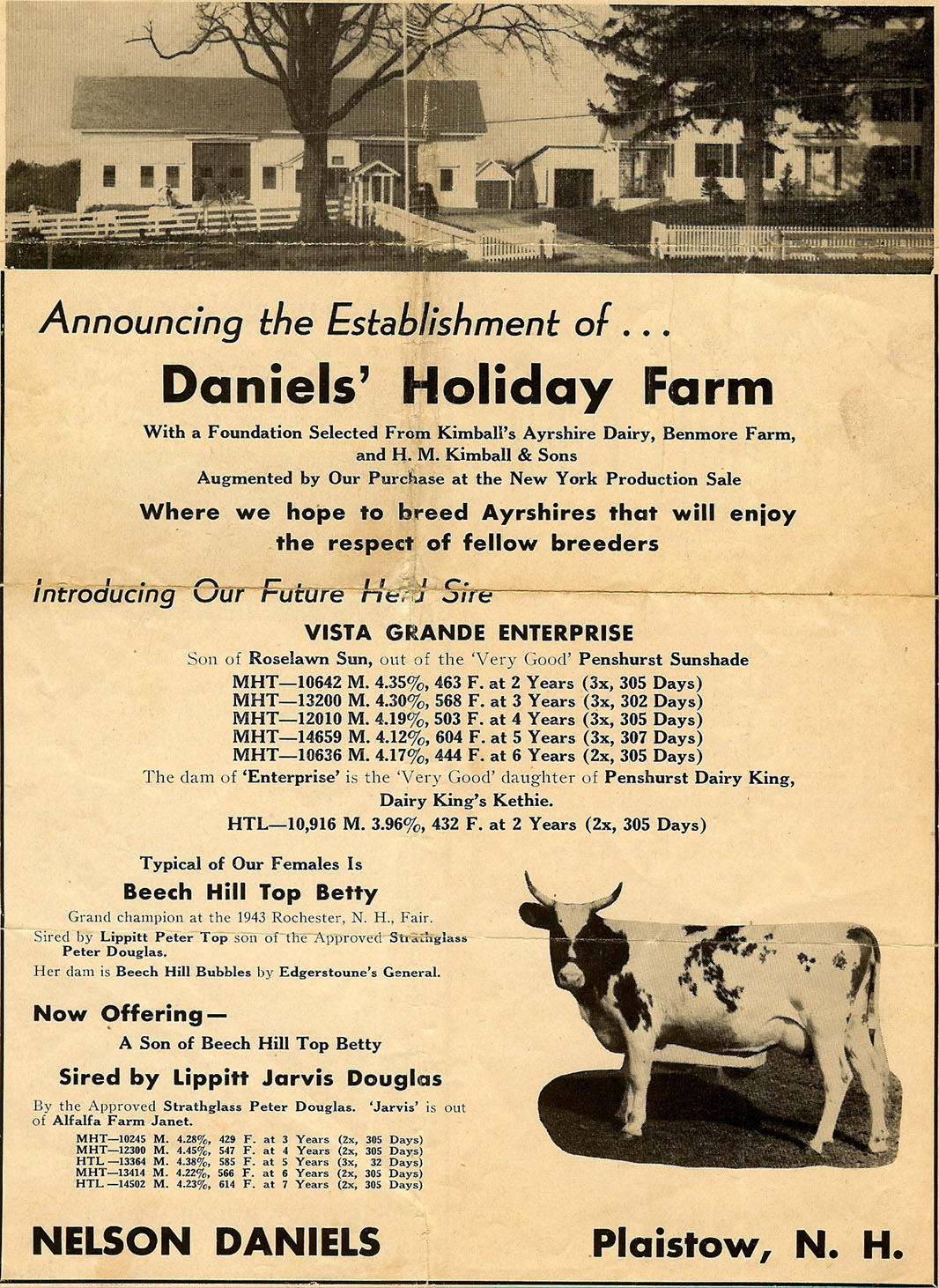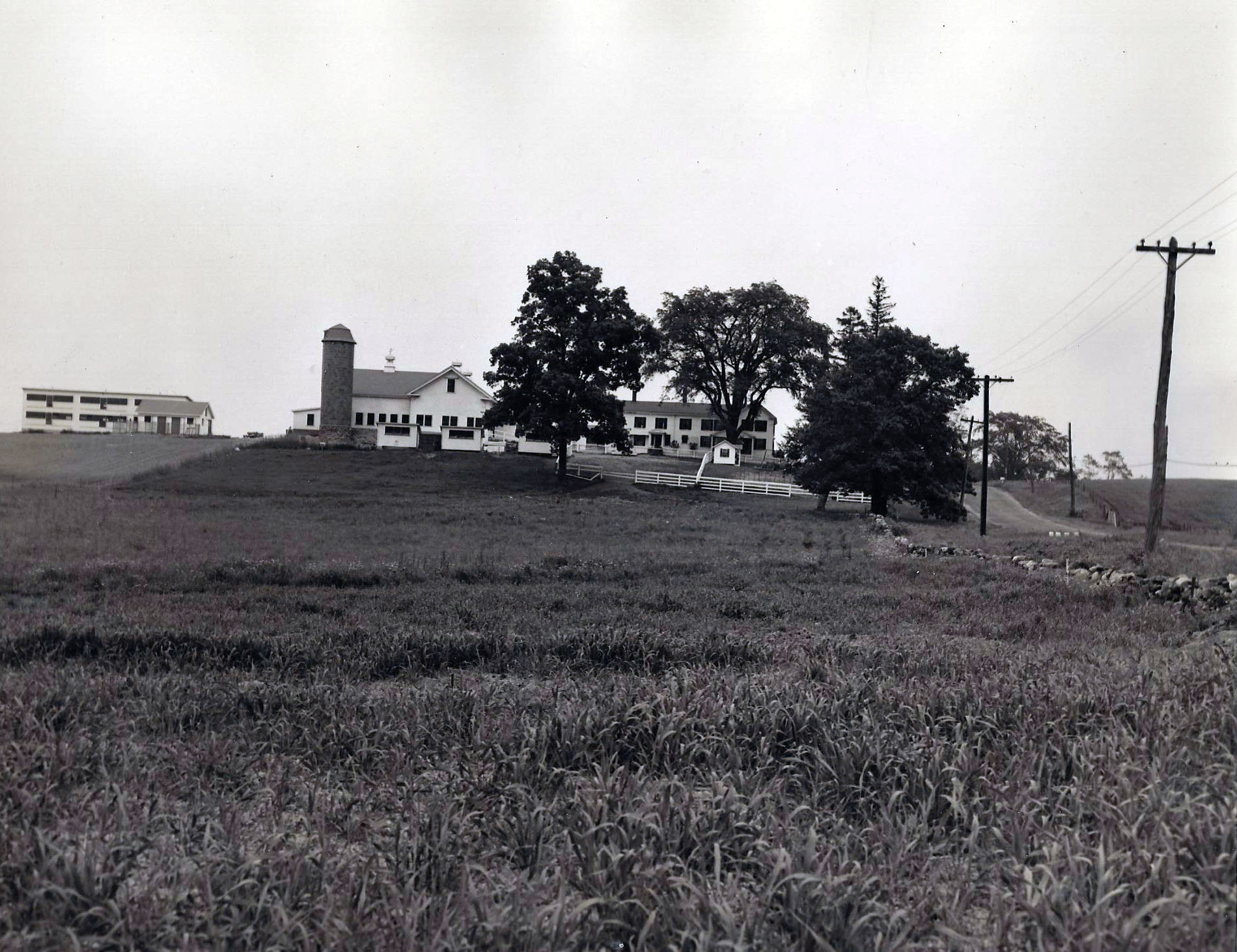The earliest recorded owners of the farm were members of the White family. William White was one of the original 12 settlers of Haverhill, Massachusetts and one of the five signers on the deed evidencing the purchase of land (then called Pentucket) from the Penacook Indians in 1640. Pentucket encompassed an area that now contains the towns of Haverhill and Methuen, Massachusetts and Salem, Atkinson, Plaistow and Hampstead, New Hampshire. William White was believed to be the author of the deed and for many years the original deed was in the possession of the White family eventually given to the Town of Haverhill in the mid 1800s. William White’s Farm was located on the Great Road (now Mill Street) in Haverhill approximately two and one half miles from Sweet Hill Farm. It is not known if William White owned the farm as records of specific property ownership during those early times are scare. William died in 1690 leaving his property to his grandson John, Jr. (John. Jrs. Father, William’s only son, had died earlier), who also inherited his father’s large holdings which included land in both Haverhill and Plaistow. It is likely the property upon which the farm is located were part of these holdings.
The first recorded occupant of the farm was Nicholas White (John, Jr. son) who received the farm and other property in Plaistow from his father. In 1732 Nicholas and his family were recorded living on the farm. Nicholas was a leader in early Plaistow affairs serving as one of its first selectmen and the town’s first moderator overseeing Plaistow’s Incorporation in 1749 and presiding over its first town meeting. Members of the White family lived on the farm for the next one hundred years. Brothers Joseph and Gage Day from Bradford purchased the farm in 1845 and Joseph Day and his family occupied the farm as their family home. They and their descendants owned and lived on the farm for the next 97 years. An interesting sidebar regarding the Days is that Henry Ford while visiting Plaistow in 1915 acquired a Native American stone mortise and an early carriage from the Day family. The earliest known photograph of the farm is believed to be from 1880 and shows members of the Day family in front of the house and barn
 Nelson and Hazel Daniels purchased the farm from the Day’s descendants in 1942. The Daniels, by all accounts, were energetic and enthusiastic owners of the farm adding on to the barn, building the clay tile silo and adding a large henhouse and renaming the farm “Holiday Farm” after the movie Holiday Inn. They raised horses, dairy cattle and chickens. As you can see from the photos below, in a short span of time they constructed major additions to the original farm buildings resulting in generally how the barn appears today.
Nelson and Hazel Daniels purchased the farm from the Day’s descendants in 1942. The Daniels, by all accounts, were energetic and enthusiastic owners of the farm adding on to the barn, building the clay tile silo and adding a large henhouse and renaming the farm “Holiday Farm” after the movie Holiday Inn. They raised horses, dairy cattle and chickens. As you can see from the photos below, in a short span of time they constructed major additions to the original farm buildings resulting in generally how the barn appears today.






